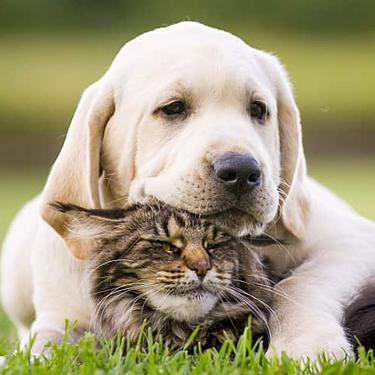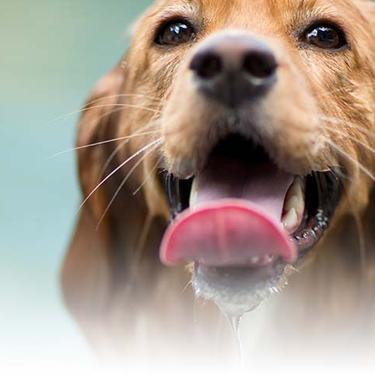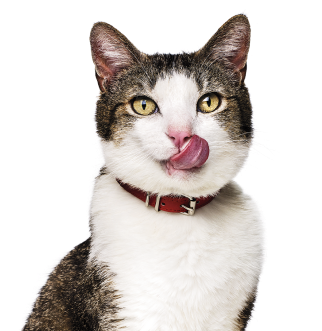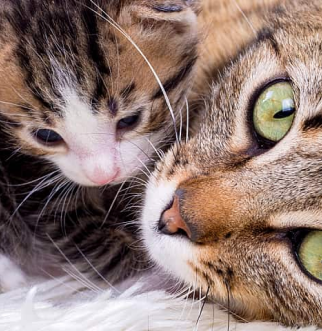
-
Find the right food for your pet
Take this quiz to see which food may be the best for your furry friend.
Find the right food for your pet
Take this quiz to see which food may be the best for your furry friend.
Featured products
 Adult 7+ Perfect Digestion Chicken, Whole Oats & Brown Rice Recipe Dog Food
Adult 7+ Perfect Digestion Chicken, Whole Oats & Brown Rice Recipe Dog FoodScience Diet's breakthrough nutrition supports ultimate digestive well-being & healthy microbiome for dogs age 7+
Shop Now Adult Perfect Weight & Joint Support Chicken Recipe Dry Dog Food
Adult Perfect Weight & Joint Support Chicken Recipe Dry Dog FoodThis weight management and mobility support dog food was created with Hill’s unique understanding of the biology of overweight dogs.
Shop Now Adult 7+ No Corn, Wheat, Soy Chicken & Brown Rice Dog Food
Adult 7+ No Corn, Wheat, Soy Chicken & Brown Rice Dog FoodSupports energy level and beautiful coat in mature dogs
Shop NowFeatured products
 Adult Perfect Digestion Chicken, Barley & Whole Oats Recipe Cat Food
Adult Perfect Digestion Chicken, Barley & Whole Oats Recipe Cat FoodScience Diet's breakthrough nutrition supports ultimate digestive well-being & healthy microbiome
Shop Now Perfect Weight Salmon & Vegetable Canned Cat Food
Perfect Weight Salmon & Vegetable Canned Cat FoodOver 70% of cats lost weight within 10 weeks when fed this nutrition
Shop Now Adult Savory Chicken Entrée Cat Food
Adult Savory Chicken Entrée Cat FoodPrecisely balanced nutrition with the delicious taste of savory minced chicken to help fuel the energy needs of cats during the prime of their life
Shop Now -
Dog
- Dog Tips & Articles
-
Health Category
- Weight
- Food & Environmental Sensitivities
- Urinary
- Digestive
- Joint
- Kidney
-
Life Stage
- Puppy Nutrition
- Adult Nutrition
- Senior Nutrition
Cat
- Cat Tips & Articles
-
Health Category
- Weight
- Skin & Food Sensitivities
- Urinary
- Digestive
- Kidney
-
Life Stage
- Kitten Nutrition
- Adult Nutrition
Featured articles
 Pet Food Storage Tips
Pet Food Storage TipsDiscover how and where to store your dry, as well as canned, dog and cat food. Learn how to find the "best before" dates on all Hill's pet food packaging.
Read More The Incredible Science Behind Your Pet's Microbiome
The Incredible Science Behind Your Pet's MicrobiomeLearn what a pet's microbiome is, how it contributes to your pet's gut & overall health, and why nutrition is important in maintaining healthy microbiomes.
Read More Water
WaterDiscover why water is the most important nutrient for your dog or cat to live a healthy life. Find out how much water your pet should consume each day.
Read More -
Find the right food for your pet
Find the right food for your pet


If you're a new pet parent, you may wonder, "Do cats have periods?" or "Why is my cat bleeding?"
Female cats do, in fact, go through a monthly cycle, but their "periods" are quite different from human menstruation. Read on to find out what your cat in heat is feeling and what you can do to help.
Mammals and Menstruation
Female humans and their closest mammalian relatives have menstrual cycles during which the uterine lining sheds outside the body once every 28 to 38 days (there are always variations, of course). Other animals in this small group include the elephant shrew, bats and the spiny mouse.
Other female mammals of reproductive age have a period-like cycle, points out BBC Discover Wildlife, but they "reabsorb the old womb-lining rather than bleed it out." This reproductive process, called estrus but more commonly referred to as being in "heat," is a monthly cycle a female cat undergoes when she isn't spayed.
Cats are polyestrous breeders, explains Animal Planet, which means they go into heat multiple times a year. If a cat doesn't mate, the heat cycle will repeat until she is spayed or becomes pregnant. Additionally, kitties that have all of their reproductive organs (which are necessary for going into heat in the first place) need a minimum of twelve hours of daylight for a normal cycle. But that doesn't mean an indoor cat is safe— cats in a safe environment with artificial light have constant hormonal activity instead of for just half the year, notes Animal Planet. During the heaviest portion of her heat cycle your cat is at the mercy of her hormones, which are kicking into high gear.


Tasty Tips
Healthy pets are happy pets, and no one is a better resource than your pet’s veterinarian.

When you first adopt your cat, be sure to ask whether or not your cat is spayed.
Why Is My Cat Bleeding?
"When do cats have periods?" is an important question to consider, because knowing your kitty's cycle will help you to identify why she is bleeding. Like humans, cats begin having an estrus cycle at the start of puberty, around the age of four to six months, and the cycle can last anywhere from seven to ten days. Unlike humans, who are fertile throughout the year, the prime time for cats to enter the estrus cycle is early spring to late fall.
In addition to your kitty's howling and yelping, it's at this time of the cycle that you may notice some light bleeding, which typically isn't worrisome. Most likely, you'll notice spots of blood on the floor or in her bedding. If you are familiar with your cat's cycle and notice something out of the ordinary, contact your veterinarian right away in case there are other health concerns.
Cats are known for their oddball antics, but their weirdness will be amped up during their cycle. Along with making strange and unusual vocalizations, a cat in heat will exhibit unique behaviors, such as rolling on the floor, demanding more attention, rubbing against you or the furniture, spraying urine, or even trying to sneak outside, notes Petful.
Keeping Your Cat Healthy
The heat cycle can be difficult for cats, and the benefits of spaying your pet are numerous. For instance, cats are susceptible to diseases, such as ovarian, uterine and mammary cancer, but the chances of developing them are greatly reduced if your cat is spayed.
According to the College of Veterinary Medicine at Cornell University, your cat should be spayed before she goes into heat for the first time. The spaying procedure, performed at your veterinarian's office, consists of the removal of your cat's reproductive organs, thereby eliminating her estrus cycle (she will no longer go into heat) and her possibility of becoming pregnant. Because cats can become pregnant during their very first reproductive cycle, it's important to have her spayed in order to prevent feline overpopulation, emphasizes The American Society for the Prevention of Cruelty to Animals®. Kittens are cute, but there just aren't enough loving homes for all of them.
When you first adopt your cat, be sure to ask whether or not your cat is spayed. If you're unsure, consult with your veterinarian during your fur baby's wellness appointment. This is also a good time to ask your veterinarian for more information about your cat's cycle and how to stop it from happening. While dealing with your cat during her estrus cycle may seem like a new challenge to understand, being educated and continuing to care for your cat the best you can is a great first step.


Christine O'Brien is a writer, mom, and long-time cat parent whose two Russian Blues rule the house. Her work also appears in Care.com, What to Expect, and Fit Pregnancy, where she writes about pets, pregnancy, and family life. Find and follow her on Instagram and Twitter @brovelliobrien.

See what Vets have to say
Read reviews from the experts and see why Hill's is the #1 Veterinarian Recommended brand.
See what Vets have to say
Read reviews from the experts and see why Hill's is the #1 Veterinarian Recommended brand.



